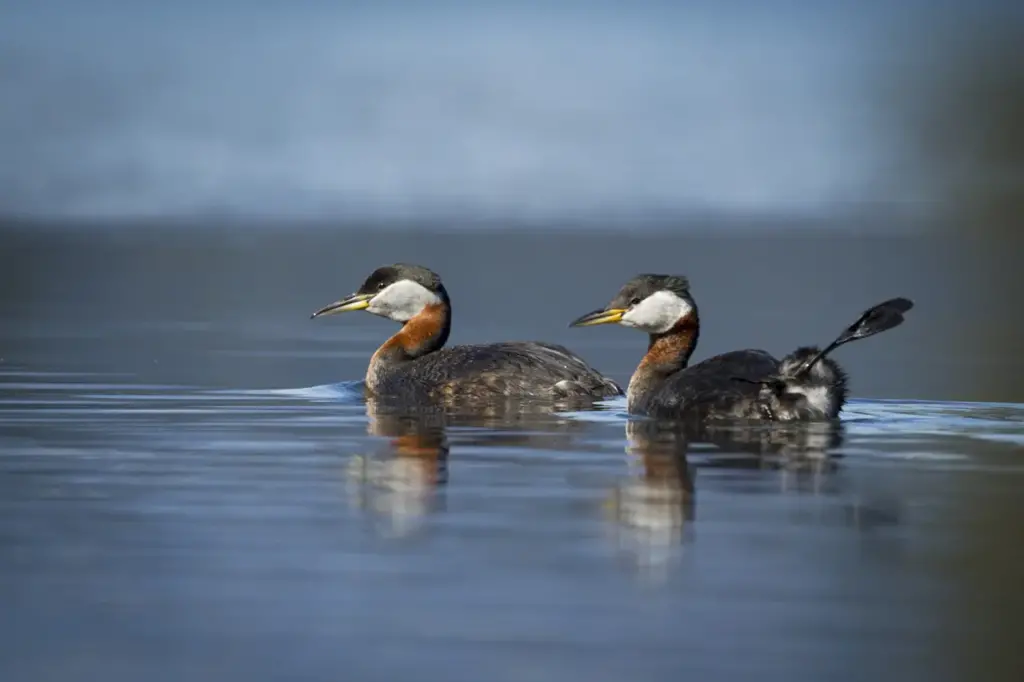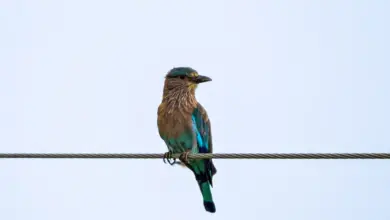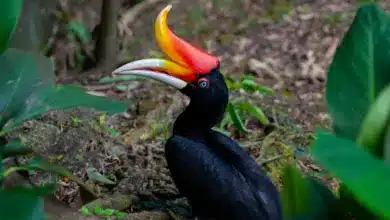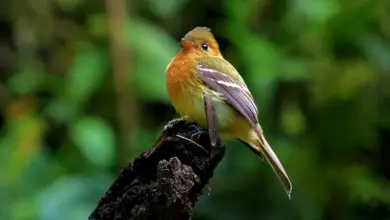The Red-necked Grebes, Podiceps grisegena, is a member of the grebe family of water birds.

Red-necked Grebes Description
The 40-46 cm long adults, with a 60cm wingspan, are unmistakable in summer with a red neck and white throat. In winter, the Red-necked Grebe is duskier than most grebes, with no white above the eye, and a mainly yellow bill. It is not quite as large as the Great Crested Grebe.
The American and East Siberian race holboelii (named for Danish zoologist Carl Peter Holböll) differs slightly from the nominate European race grisegena in adult plumage when it has more extensive yellow on its bill.
In holboellii, the yellow extends almost to the end of the lower beak, whereas on grisegena the yellow is much more restricted.
This difference only applies to adult birds, however; juvenile and first-winter grisegena can have extensive yellow bills.
Distribution
It breeds in vegetated areas of freshwater lakes across Europe, western Asia, and northwestern North America. Most birds migrate in winter to the coast.
Behavior
It is an excellent swimmer and diver and pursues its fish prey underwater. It has an elaborate mating display. Like all grebes, it nests on the water’s edge, since its legs are set very far back and it cannot walk well.
Usually, it lays four to five eggs at the end of April. Sometimes it carries its young on the back.
The Red-necked Grebe is one of the species to which the Agreement on the Conservation of African-Eurasian Migratory Waterbirds (AEWA) applies.





